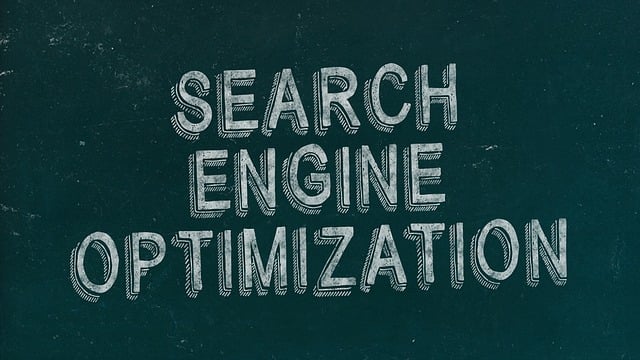Structured data is a vital component of Technical SEO strategies, enhancing search engine comprehension and representation of web page content. By using schema markup (e.g., JSON-LD, Microdata) within HTML code, developers can highlight key information like business details, product attributes, and event times. This structured approach improves search engines' knowledge graphs, leading to better visibility through rich snippets, enhanced user experience, higher click-through rates, and increased website traffic. Proper implementation involves identifying relevant schema types, integrating them accurately, testing with tools like Google's Structured Data Testing Tool, and regular updates as the site evolves. Continued advancements in structured data technologies promise a brighter future for Technical SEO, with focus on rich snippets, voice search optimization, AI/ML integration, and improved user experiences.
In the ever-evolving digital landscape, Structured Data stands out as a powerful tool for enhancing search engine optimization (SEO) strategies. This article delves into the intricacies of structured data from a technical SEO perspective, offering a comprehensive guide for webmasters and marketers alike. We explore its significance, types, implementation methods using Schema Markup, RDFa, Microdata, and JSON-LD, and its impact on click-through rates. Discover how structured data optimizes visibility, improves SEO metrics, and navigates the future trends in technical SEO.
Understanding Structured Data: A Technical SEO Perspective

Structured data, a powerful tool in the arsenal of Technical SEO strategists, refers to the organized presentation of information on web pages using predefined formats and tags. This structured format allows search engines to understand and interpret content more effectively, thereby enhancing their ability to crawl and index websites accurately. By providing clear context and relationships between data points, it enriches the search engine’s knowledge graph, leading to improved visibility in search results.
From a Technical SEO perspective, implementing structured data involves leveraging schema markup, a common technique that tags specific data within HTML code. This markup enables search engines to identify key elements such as business information, product details, or event schedules, and display them in enhanced snippets or rich results. Such visual enhancements not only attract users’ attention but also increase click-through rates, ultimately driving more traffic to the website.
What is Structured Data and Why Does it Matter?

Structured data is a way of organizing and presenting information in a format that search engines can easily understand and interpret. It involves using specific tags, markers, and syntax to define different elements on a webpage, such as people, places, products, events, or reviews. This structured format provides a clear picture of the content, allowing search engines to extract valuable data and display it in rich snippets or knowledge graphs.
In the realm of Technical SEO, structured data plays a pivotal role in enhancing visibility and user experience on search engine results pages (SERPs). By providing search engines with precise, structured information, websites can improve their chances of securing featured snippets, which are direct answers to user queries displayed above organic search results. This not only boosts online presence but also drives more relevant traffic. Additionally, structured data helps search engines better comprehend the context and intent behind content, leading to more accurate indexing and improved ranking potential.
Types of Structured Data for Enhanced Visibility

In the realm of Technical SEO, structured data plays a pivotal role in enhancing website visibility on search engines like Google. It provides a clear and organized framework for search crawlers to understand the content and context of web pages, leading to more accurate indexing and improved ranking potential. The two primary types of structured data that make a significant impact are schema markup and JSON-LD (JSON for Linking Data).
Schema markup is a type of structured data that uses predefined vocabulary to describe the relationships between entities on a webpage. This helps search engines understand the content better, enabling them to display rich snippets in search results. On the other hand, JSON-LD is a lightweight data format that offers a more flexible and readable way to implement structured data. Both methods significantly boost visibility by providing valuable context to search engine algorithms, ultimately driving higher click-through rates and improved user experience.
Implementing Schema Markup: A Step-by-Step Guide

Implementing Schema Markup: A Step-by-Step Guide
Schema markup is a powerful tool for enhancing Technical SEO efforts, providing search engines with structured data to better understand your website’s content. The process begins by identifying the relevant schema type for each page or data set. For instance, you might use `HowTo` for tutorials, `Article` for blog posts, or `Product` for e-commerce items. Each schema type has specific properties that need to be filled out accurately, reflecting the content on your page.
Once the schema type is chosen, developers can start coding the markup into the website’s HTML. This involves adding custom script tags or utilizing existing Schema Markup libraries and tools. After implementation, it’s crucial to validate the markup using Google’s Structured Data Testing Tool or similar services to ensure accuracy and compliance with search engine guidelines. Regular testing and updates will help maintain optimal Technical SEO performance as your website evolves.
The Role of RDFa, Microdata, and JSON-LD

Structured data plays a pivotal role in enhancing Technical SEO, and among its key components are RDFa (Resource Description Framework Attribute), Microdata, and JSON-LD (JavaScript Object Notation for Linked Data). These technologies enable search engines to better understand the content of web pages by providing them with explicit information about entities, relationships, and descriptions.
RDFa offers a way to semantically mark up HTML documents using XML-like attributes, while Microdata provides a more structured approach through custom schema markup. JSON-LD, on the other hand, is a lightweight data format that allows for efficient transmission of structured data between applications. By leveraging these structured data techniques, websites can improve their visibility in search engine results, ultimately driving more organic traffic and enhancing overall online presence.
Improving Click-Through Rates with Rich Snippets

Structured data plays a pivotal role in enhancing search engine optimization (SEO) strategies, particularly when it comes to boosting click-through rates (CTRs). By implementing rich snippets, web developers can transform ordinary search results into interactive and visually appealing snippets, enticing users to click. These rich snippets utilize microdata to provide additional information about the webpage, such as ratings, reviews, or specific details about products or events.
In the competitive landscape of Technical SEO, utilizing structured data effectively gives businesses an edge. Search engines like Google prioritize content that offers a better user experience, and rich snippets do exactly that. They increase the visibility and prominence of search results, making them stand out among competitors. This visual enhancement not only captures users’ attention but also encourages them to interact with the result, ultimately driving higher CTRs and improving overall online performance.
Search Engine Optimization Benefits of Structured Data

Structured data offers significant advantages for Search Engine Optimization (SEO), playing a pivotal role in enhancing search engine understanding of website content. By providing clear, organized information about your web pages, structured data allows search engines to index and display results with enhanced richness and specificity. This is particularly beneficial for Technical SEO as it improves the accuracy of search results, potentially leading to higher click-through rates due to more appealing snippets.
Additionally, structured data enables search engines to uncover deeper insights into a website’s content, facilitating better matching of user queries with relevant pages. This precision in indexing can result in improved ranking for targeted keywords and increased visibility on search engine result pages (SERPs). As a result, businesses can attract more organic traffic and enhance their online presence.
Common Mistakes to Avoid During Implementation

When implementing structured data for SEO, several common mistakes can be avoided by keeping Technical SEO best practices in mind. One major pitfall is neglecting to use the right schema markup for each unique piece of content. Every page should have its own distinct structure, and using the incorrect or overgeneralized markup can confuse search engine crawlers, hindering effective indexing.
Another mistake is failing to validate and test the structured data once implemented. Even with careful planning, errors can slip through. Utilizing tools like Google’s Structured Data Testing Tool allows for quick validation, ensuring that the data is properly formatted and understood by search engines. Regular testing and updates are crucial for maintaining accurate representation of your content, thereby enhancing your site’s visibility in search results.
Future Trends in Structured Data for Technical SEO

The future of structured data for Technical SEO is promising, with ongoing developments pushing the boundaries of what’s possible. As search engines become more sophisticated, they are able to better interpret and utilise structured data, leading to enhanced user experiences and improved rankings. Emerging trends include the increased use of microdata and schema markup to provide rich snippets and knowledge graphs, offering users at-a-glance information that boosts click-through rates.
Additionally, voice search optimisation is becoming a key focus. With more people using voice assistants, structured data needs to be designed with this trend in mind, ensuring content is formatted in ways that are easily consumable by both humans and AI algorithms. Furthermore, the integration of artificial intelligence (AI) and machine learning (ML) technologies will enable more advanced data analysis, predictive analytics, and personalisation, allowing for more tailored search results and a more seamless user journey.
